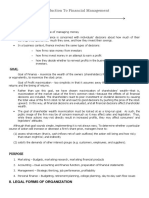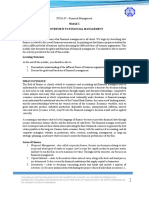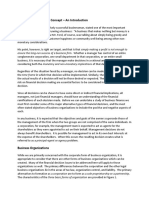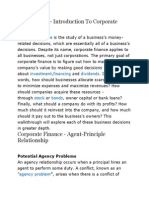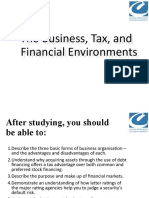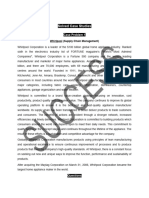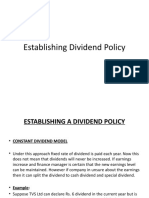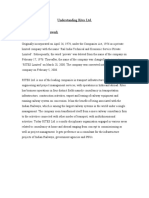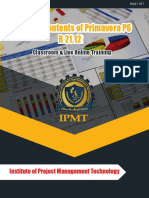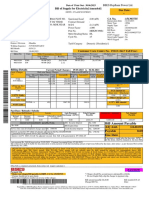0% found this document useful (0 votes)
17 views6 pagesMAS2 Lecture
The document discusses the role of managerial finance and the various legal forms of business organization, including sole proprietorships, partnerships, and corporations, each with their own advantages and disadvantages. It emphasizes the primary goal of finance as maximizing shareholder wealth, while also considering the interests of stakeholders and the importance of business ethics. Additionally, it outlines the functions of financial managers, the relationship between finance and accounting, and the significance of corporate governance and agency problems in managing a firm.
Uploaded by
ashtonjohhnCopyright
© © All Rights Reserved
We take content rights seriously. If you suspect this is your content, claim it here.
Available Formats
Download as PDF, TXT or read online on Scribd
0% found this document useful (0 votes)
17 views6 pagesMAS2 Lecture
The document discusses the role of managerial finance and the various legal forms of business organization, including sole proprietorships, partnerships, and corporations, each with their own advantages and disadvantages. It emphasizes the primary goal of finance as maximizing shareholder wealth, while also considering the interests of stakeholders and the importance of business ethics. Additionally, it outlines the functions of financial managers, the relationship between finance and accounting, and the significance of corporate governance and agency problems in managing a firm.
Uploaded by
ashtonjohhnCopyright
© © All Rights Reserved
We take content rights seriously. If you suspect this is your content, claim it here.
Available Formats
Download as PDF, TXT or read online on Scribd
/ 6
















